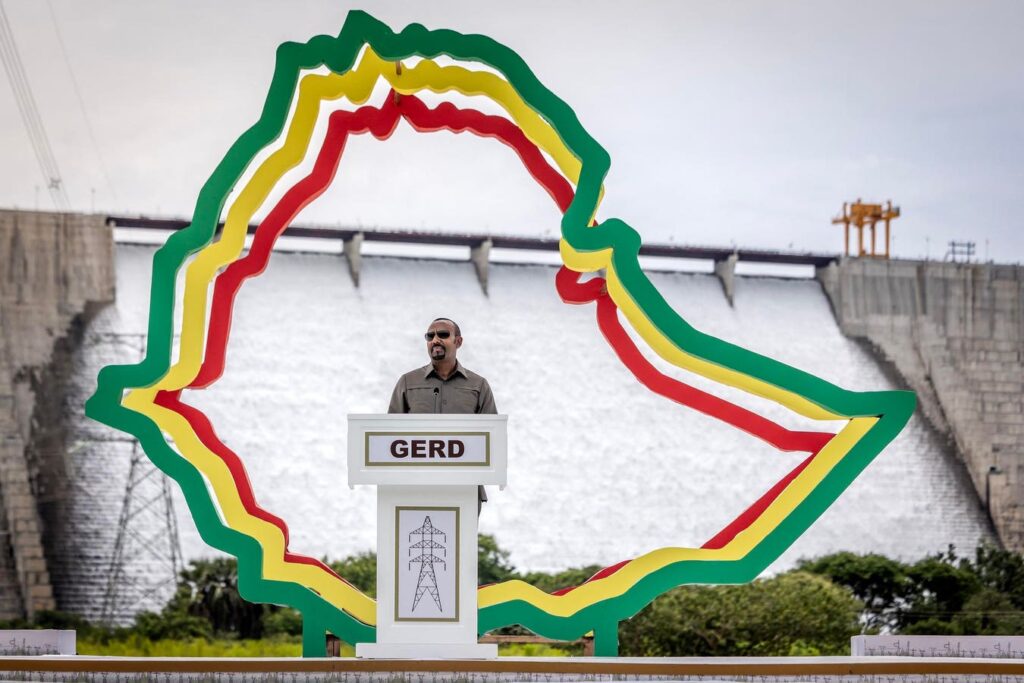The Grand Ethiopian Renaissance Dam: A New Era for Ethiopia’s Energy Future
Introduction
In September 2025, Ethiopia celebrated a significant milestone with the inauguration of the Grand Ethiopian Renaissance Dam (GERD), the largest hydroelectric project ever constructed in Africa. This monumental achievement comes amid challenges, including withdrawal of international funding and tense relations with downstream countries, notably Sudan and Egypt. Nonetheless, the Ethiopian government, led by Prime Minister Abiy Ahmed, persevered, securing domestic funding to realize this ambitious vision for the nation’s energy future.
Overcoming Challenges
Initially faced with financial hurdles as multilateral donors expressed apprehension about potential conflicts with downstream nations, Ethiopia sought alternative funding options. A remarkable fundraising effort saw Ethiopian citizens, including those in the diaspora, contribute $460 million through various initiatives such as bond sales and athletic events. This grassroots mobilization showcases a strong national commitment to achieving energy sovereignty.
Importance of Energy Sovereignty
Abiy Ahmed’s government framed the GERD project not only as a means of energy generation but as a unifying national endeavor. The project embodies a convergence of grassroots efforts and state-led initiatives aimed at achieving developmental goals. As noted by Richard Smalley, a Nobel laureate in physics, “energy delivery is the most important challenge facing humanity,” serving as a catalyst for solving other pressing issues such as poverty reduction.
Leadership and Governance
While Prime Minister Abiy Ahmed has been a polarizing figure, particularly due to criticisms regarding his administration’s handling of the Tigray conflict, the completion of the GERD is a crowning achievement. His leadership style reflects a blend of humility and determination, as highlighted by his former doctoral supervisor Dr. Amr Abdallah. This effective governance model aligns with the concept of “convergent governance,” where community involvement meets institutional support for national development.
Role of Technocrats and Activists
The successful realization of the GERD also relies on the efforts of technocrats and social activists both domestically and internationally. From its inception under former Prime Minister Meles Zenawi in 2011, the project has been characterized as a cross-ethnic initiative, encapsulating Ethiopia’s diverse communities in its vision for energy independence and economic growth.
Engagement of the Business Community
The involvement of influential Ethiopian business figures has further bolstered the GERD project. Investors like Mohammed Al Amoudi not only contributed capital but also viewed their investments as a commitment to the nation’s future. This dual approach from the public and private sectors has been instrumental in transforming Ethiopia into a significant player on the continental stage.
The Future of the GERD
The Grand Ethiopian Renaissance Dam is designed to last for at least a century and will play a pivotal role in meeting the energy needs of a nation where over half the population lacks access to grid electricity. However, managing the downstream expectations regarding water flow will be crucial for regional stability. Ethiopia is in a unique position, hosting the United Nations Commission for Africa alongside the African Union, which provides an additional platform for dialogue and cooperation on energy and water delivery.
Sustainable Development Goals
As Ethiopia steps into a new era of energy generation, the focus must now shift toward consolidating sustainable development efforts and avoiding the pitfalls of expansionary militarization that can accompany increased regional power. The GERD stands as a testament to national resilience and a beacon of hope for millions of Ethiopians aspiring for energy independence.
Conclusion
The inauguration of the Grand Ethiopian Renaissance Dam signifies not just a monumental engineering feat but also a potential turning point for Ethiopia’s economic landscape. With careful management and a commitment to collaborative governance, the GERD could help Ethiopia fulfill its aspirations of becoming a regional energy powerhouse while promoting stability and cooperation among its neighbors. The coming years will be critical as the government navigates the complexities of energy export and regional diplomacy in a rapidly evolving geopolitical landscape.
